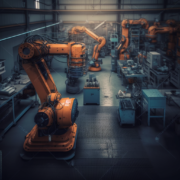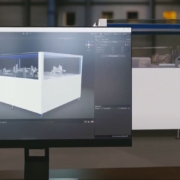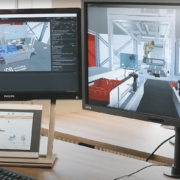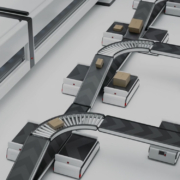Virtual Development in systems engineering and R&D
The development of a new machine or system is a process, where bottlenecks and other difficulties can be encountered. With methods like lean and agile, these production processes can be optimized taking out one bottleneck at a time. In this blog we guide you through the benefits of virtual development in systems engineering and R&D.
Key roles in the R&D cycle
In the R&D cycles of modern systems engineering, we clearly see that one of the biggest challenges is “communication” on the system’s requirements and system concept(s) between multiple stakeholders. Roughly we can distinguish these key roles/disciplines:
- Mechanical engineering
- Mechatronics and electrical engineering
- Software and controls engineering
Today’s mechatronics systems include a lot of software. Due to legacy processes, the development of the software often only starts after engineering is done.
So, to tackle most of these bottlenecks, we would need a tool or process to align communication and bring insights in the R&D flow. Virtual Development of mechatronic systems can act as such a tool in the process. The use of Digital Twins connects the 3 main modalities together; mechanical, mechatronics and software. This delivers a virtual model that shows the geometry, motion and controls concepts in an integral fashion. We call this virtual model a ‘’virtual prototype’’.
Virtual Test Platform
The virtual prototype can be used throughout the entire R&D process. From concept to first physical prototype and finish with commissioning of the actual system. It can also be used as a Virtual Test Platform to validate future updates. The virtual prototype can, for example, be used in FMEA (Failure Mode Effectiveness Analysis). It not only shows the happy flow of a system/concept, but also other scenarios that can be labeled as unhappy flow.
Build a Digital Twin
An engineer can use a Virtual Development tool to build a Digital Twin. This can be done by using the draft drawings of a CAD setup and adding concepts of controls elements like; actuators and sensors. The flow of material through the system can also become leading in the conceptualisation of the system. Discrete Event Simulation could be used as a simulation set to add motion in space and time, using a spline system. This enables the engineer to set up production concepts, and flows, mitigating the unhappy flows, and testing the happy flow concepts.
The created model connects the main disciplines together, resulting in a talking piece or communication model to which all the stakeholders can relate. Prespective offers direct tools to make annotations on these models in 3D, so the comments of the people involved can be saved in the right space and time of the system concept.
Benefits
Making it a powerful tool in integral design reviews, also inviting the software discipline much earlier into the process. Which helps to make more well informed decisions, consulting all that can help in making the best decision possible. This leads to less unforeseen issues later in the R&D cycle, less rework, better informed clients, a more parallel (and faster) process and less material and energy wasted.
Do you want to discuss how Virtual Development of your system could benefit your organisation? Feel free to contact us.













Leave a Reply
Want to join the discussion?Feel free to contribute!